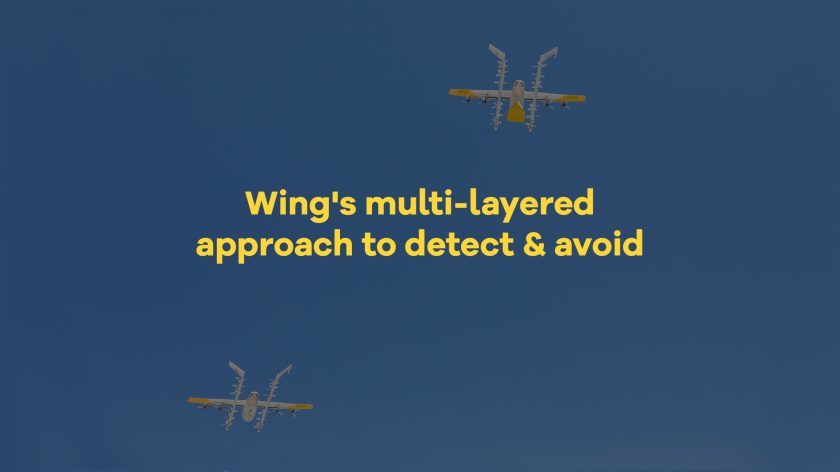Wing has developed a multi-layered detect & avoid system to enable the drone services company to safely integrate aircraft into complex airspace, according to a company blog.
Wing drone operations in the Dallas Fort-Worth area operate within airspace referred to as the “Mode C Veil”, while all Wing operations take place below 400 feet in populated areas where most traditional aircraft are not permitted to fly.
Wing also leverages technology to actively detect and avoid other air traffic. Most traditional aircraft within the Mode C Veil are required to utilize Automatic Dependent Surveillance-Broadcast (ADS-B), a system that broadcasts their location and flight data. Wing’s automated drones and the company’s pilots in command constantly monitor this real-time data stream. When needed, the drones can pause take off and automatically adjust their flight paths to maintain safe distances. Another action the drone can take is to land proactively, directing the drone to designated “preferred landing zones” away from populated areas and traffic, and gently landing on the ground. This is similar to how cars can pull over to the side of the road, when needed, says Wing, adding another layer in the mitigations to help promote safety.
Wing’s trained pilots in command (PICs) continuously monitor the airspace and can intervene during a drone flight if needed to initiate a contingency landing. Wing personnel are also prepared for swift retrieval of landed drones.
Wing says responsible drone integration is key to unlocking the potential of this technology, creating a future where efficient delivery seamlessly coexists with traditional air traffic.
For more information visit:




